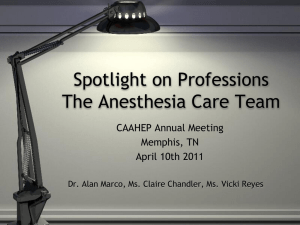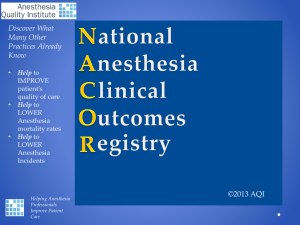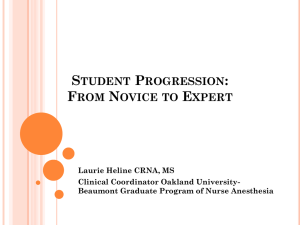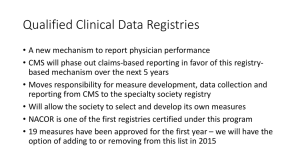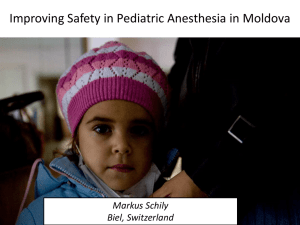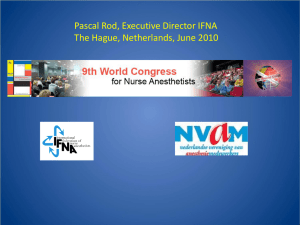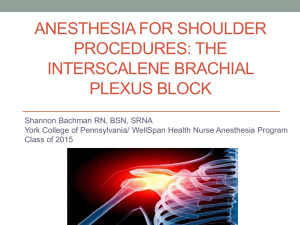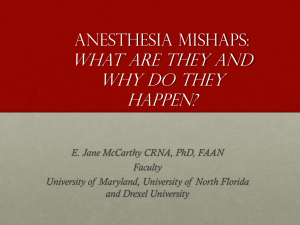2014 Billing in the VA
advertisement
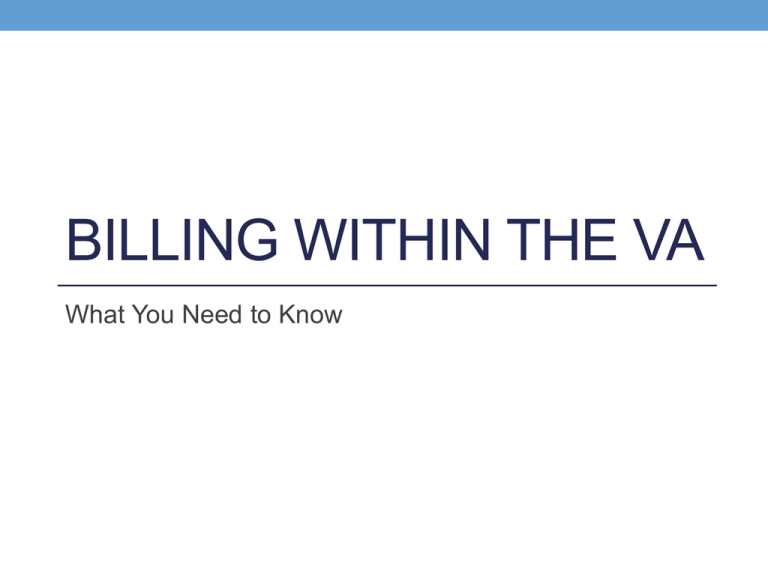
BILLING WITHIN THE VA What You Need to Know DSS • Decision Support System. The managerial cost accounting system that uses a costing methodology to join costs and workload • Outputs: Direct Clinics • Inputs: Expenses, Indirect Clinics Why all the attention now? • OPES: Office of Productivity, Efficiency, and Staffing • VA OIG Report • Staffing Justification In this 2012 VAOIG Report, It was found that VHA did not have an effective staffing methodology to ensure appropriate staffing levels for specialty care services, including Anesthesia. Specifically, VHA did not establish productivity standards for all specialties and VA medical facility management did not develop staffing plans. This occurred because there is a lack of agreement within VHA on how to develop a methodology to measure productivity, and current VHA policy does not provide sufficient guidance on developing medical facility staffing plans. As a result, VHA’s lack of productivity standards and staffing plans limit the ability of medical facility officials to make informed business decisions on staffing to meet patient care needs, such as access and quality of care. Definitions • Productivity • Relative Value Unit • Workload • Efficiency • Labor Mapping • Person Class • Stop Codes • Count Clinics • Encounters Productivity: the rate at which goods are produced or work is completed. Within the VA this is captured by Decision Support System (DSS) and is expressed in Relative Value Units (RVUs) per provider Full time Equivalents (FTEE) that is dedicated to clinical duties as reported in DSS labor mapping. Relative Value Unit: weighted units of measure that allow for the relative comparison between different complexities and mixes of products. You could also look at this as minutes of time you may do any particular activity. Workload: services that have been provided to patients and recorded in Scheduling/Appointment Management, Patient Encounter Forms Efficiency: the ability to do something or produce something without wasting materials, time, or energy. This means when calculated out (workload x RVU’s/Worked hours) a percentage number is determines that will indicate based on 100% efficiency scale where your workload falls. Labor Mapping: each person in a position within your work area is mapped based on their responsibilities. For Anesthesia this typically includes MDs, CRNAs, ARNPs, MITs. Each person is mapped out based on the idea of time they assist in each area. You should be aware of how you are mapped, i.e. Clinical time, administrative time, education time, etc. Person Class: Everyone is assigned a number to represent their person class when they hire into their Medical Center. Nurse practitioner, Clinical Nurse Specialist, Advanced Practice Nurse, registered nurse. The assigned person class number for an MD is 1081, CRNA is 1063, ARNP is 1064 and MIT is 1037. Stop Codes: DSS identifiers that represent Anesthesia workload. Count Clinics: Clinics that are tied to a stop code to get credit for non-OR workload. Requires an Encounter Form to capture this workload. Encounters: Documentation of appointment and workload for direct patient care and charting of this care. How is Productivity calculated • Productivity is expressed in Relative Value Units provider FTEE that is dedicated to clinical duties as reported in DSS labor mapping • Non-CPT work is not included in the report Secondary Stop Codes • GI 321 • IR 153 • Cath Lab 333 • Pulm 481 NEWEST STOP CODE TELEPHONE ANESTHESIA 441 Records patient consultation or medical care management, advice, and referral provided by telephone contact between patient or patient's next-of-kin and/or the person(s) with whom the patient has a meaningful relationship, and the clinical and/or professional staff assigned to the anesthesia service. Includes the administrative and clinical services. Provisions of 38 U.S.C. Section 7332 requires that records which reveal the identity, diagnosis, prognosis, or treatment of VA patients which relate to drug abuse, alcoholism or alcohol abuse, infection with HIV, or sickle cell anemia, are strictly confidential and may not be released or discussed unless there is a written consent from the individual. Example from Dallas Labor Mapping: Once the Clinics and Encounter Forms are created and the providers start using them you need to make sure to map labor hours to the Non-OR workload function in your DSS labor mapping. If you don’t have direct responsibility for labor mapping please find the person in your Service/Section who does this function and update your provider labor mapping. The typical relationships between non-OR workload stop codes and DSS departments are shown in the table below. Clinical Service Possible Stop Code Mapping Product Dept ALBCC DSS Prod Unit Anesthesia G00 21200 00 Administration ADMIN Anesthesia G01 21201 01 Anesthesia Clinical Research ADMIN Anesthesia G02 21202 02 Anesthesia Teaching ADMIN Anesthesia G03 21203 03 Anesthesia Consults Anesthesia G08 21208 08 Anesthesia MD-Bedday National Name Limited 419 ADMIN/Direct Direct Direct Anesthesia G3S 2123S 3S Anesthesia OR/Ambulatory Surgery OR/Cystoscopy Urology Suite Anesthesia G3T 2123T 3T Anesthesia Procedure (ECT, ER, Recovery Room, SICU) Anesthesia GSJ 212SJ SJ Anesthesia PreOP/Post OP 419 Anesthesia GSK 212SK SK Anesthesia Pain Clinic 420 yes 427, 434 Direct Direct yes Direct Direct Preop Encounter NOTES ABOUT ENCOUNTERS Operating Room CRNAs should complete encounters for all Peri-op procedures such as A-line and other procedures in holding, OR or PACU, and add the supervising anesthesiologist in the encounter.When working with residents, Anesthesiologists should also complete encounters for all Peri-op procedures such Aline and other procedures in holding, OR, PACU and add the resident to the encounter. Resident cannot fill the encounter as primary providers because the workload will not be captured. Outside Operating Room – encounters are needed for anesthesia care CRNAS and Anesthesiologists should complete encounters for all anesthesia care outside the OR. The best way would be to have the encounter in the Preinduction note and add the either the resident or the CRNA to the encounter. It is also best to get the preinduction note done before the end of the case so that either the resident or CRNA can link the pdf file to that note. If the CRNA does the case. The CRNA is primary. Outside Operating Room – encounters are needed for anesthesia care Anesthesiologists should complete encounters for all anesthesia care outside the OR. The best way would be to have the encounter in the Pre-induction note and add the either the resident or the CRNA to the encounter. It is also best to get the pre-induction note done before the end of the case so that either the resident or CRNA can link the pdf file to that note. CRNAs should complete encounters for all Peri-op procedures such as A-line and other procedures in holding, OR or PACU, and add the supervising anesthesiologist in the encounter. When working with residents, Anesthesiologists should also complete encounters for all Peri-op procedures such A-line and other procedures in holding, OR, PACU and add the resident to the encounter. Resident cannot fill the encounter as primary providers Examples of DSS Reports How do we get reimbursement? • Copayments • Third Party Billing 10-15% • VERA: Veterans Equitable Resources Allocation 85-90% QUESTIONS?
